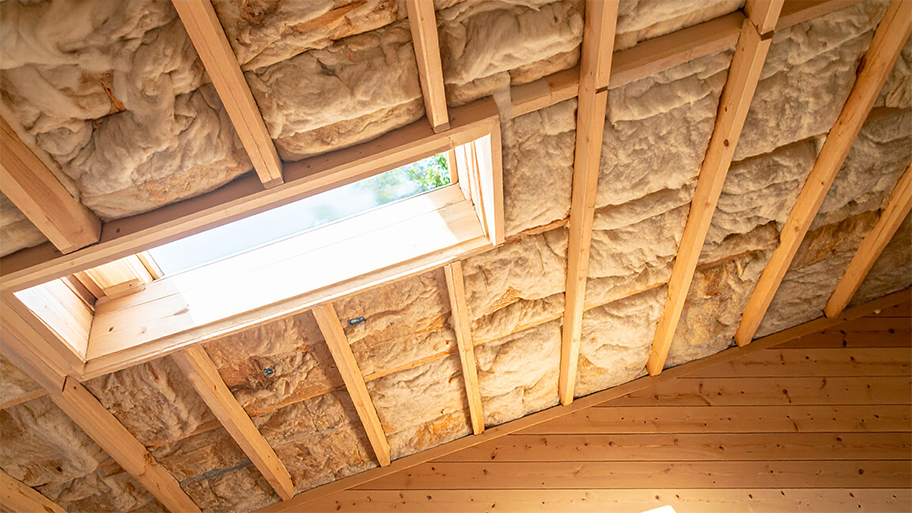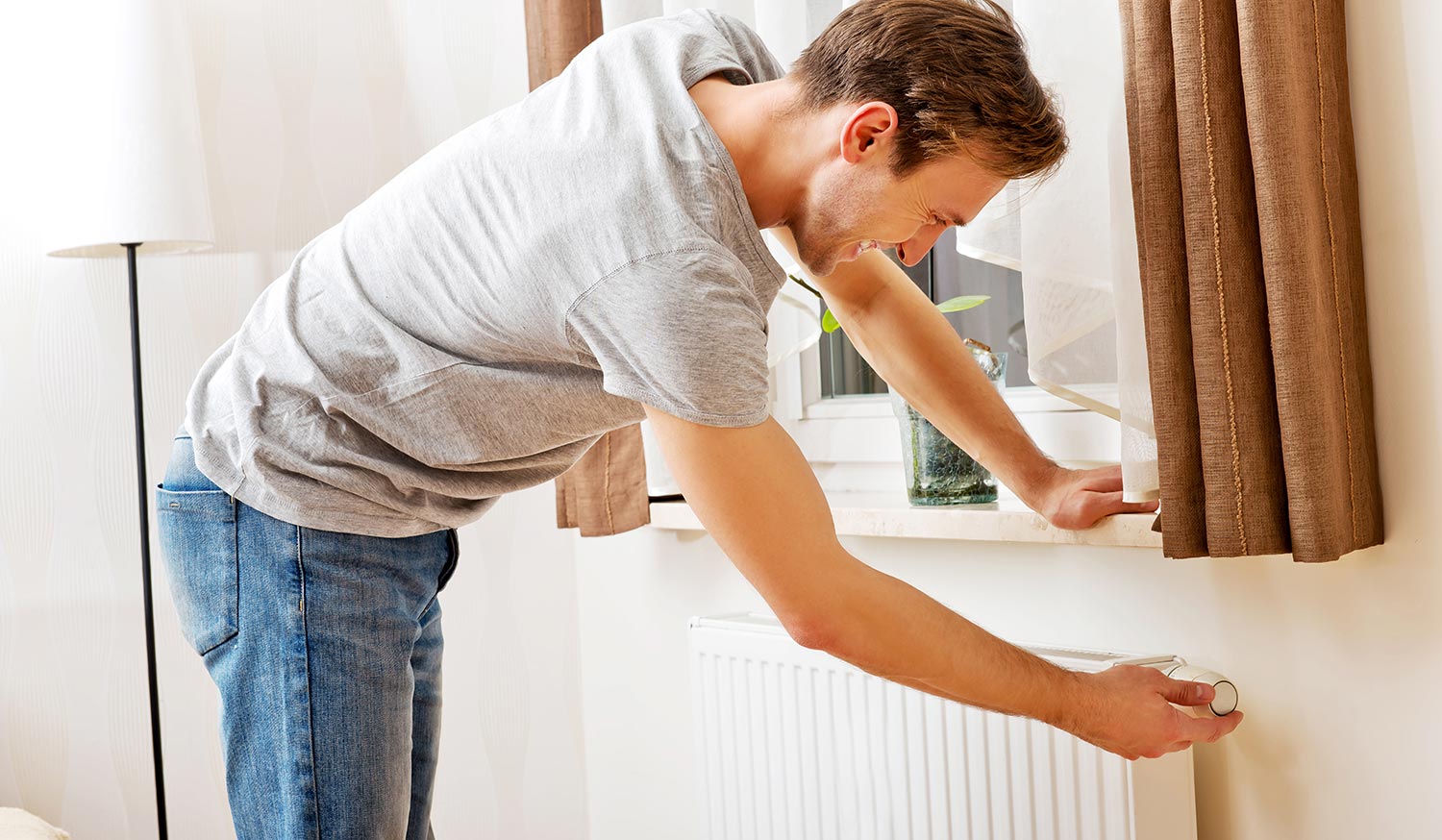
Insulating your attic can massively improve your home’s efficiency and reduce electric bills. Use this guide to find out what attic insulation will cost you.
If the clock is ticking on your home's insulation, your energy bills are ticking upward


Mineral wool and fiberglass are the longest-lasting insulation materials, with lifespans of nearly a century
Insulation should be checked regularly for water damage and pest infestations
A sudden spike in your energy bills could be a sign that your insulation is damaged and needs replacing
If your house is sending you shivers and your energy bills are getting you hot under the collar, it’s about time to replace your insulation. But how long does insulation last? Any insulation that is more than 10 years old may be out of sync with recommendations from the U.S. Department of Energy. Find out how long your insulation lasts to decide if it's time to replace it for better energy efficiency.
Insulation lifespan varies based on the materials used in your home. Choosing the best one for your home will require weighing the required R-value for your climate with your budget, as well as considering the shape and structure of the space you need to insulate. Take a look at what to expect from common types of home insulation:
A popular choice found in homes around the country, well-maintained fiberglass can last for 80 to 100 years. However, homeowners need to begin checking fiberglass for weak points by year 15. The earliest signs of failing fiberglass are fallen chunks on the floor or batts detached from frames.
If your home has eco-friendly, plant-based cellulose insulation, the expected life is 20 to 30 years. However, cellulose insulation can begin degrading at year 15. This happens because cellulose insulation is plant-based, so water, mold, bugs, and critters can chip away at it over time.
Age may just be a number, but there’s something to be said for mineral wood insulation, which can last for up to 100 years.
Spray foam offers lifetime insulation as it can last for 80 years without any need for updates.
Ultimately, the material of the batt or blown-in insulation will be the primary factor in its lifespan; blown-in mineral wool is still one of the longest-lasting choices for insulation, with a lifespan of nearly a century. That said, batt insulation is known as being a more effective thermal barrier, as blown-in insulation settles and loses its R-value over time, which means you might need to replace it sooner.
Blown-in insulation is usually the best option if you need to get insulation into nooks and crannies, such as awkward areas inside an attic.
According to Angi data, only about 8% of common batt and roll insulation projects involve repairing or replacing this type of insulation. So, homeowners can expect batt and roll insulation to have good longevity, making it a worthwhile investment.
While the majority of insulation materials are designed to last for decades, the insulation in your home may predate your occupancy, leading you to question whether it's time for a replacement. Keep an eye out for these signs, as they may indicate that it's time to consider updating your home's insulation.
If you’ve noticed your energy bills increasingly go up over the past year, it’s possible that your insulation is starting to degrade, allowing more hot and cold air to get in and out of your home.
Does your bedroom feel as hot as a sauna while the bathroom is akin to stepping inside an igloo? If the temperature inside your home never feels consistent, even after the HVAC has been running steadily for a few hours, your insulation is likely the culprit.
Cold floors and walls indicate that cold outside air is penetrating into your home, which your insulation should be able to prevent.
Mildew and mold can smell musty and damp; if there’s a bad scent you can’t find the source of, get your insulation checked by a mold remediation specialist. Additionally, if spray foam insulation is improperly mixed, it can off-gas. If this is the case, you’ll need to remove the insulation and then reapply the material.
If you live in very cold climates, frozen pipes are one sign of insulation failure. In addition, ice dams can form when insulation has deteriorated to the point that water lines rupture. Look for large icicles or chunks of ice on your roof.
Insulation, especially fiberglass insulation, is a cozy place for many critters to bunk up. If you smell urine or see rat droppings in your attic, it’s likely that rodents or insects have taken up residence in your insulation and could be damaging it.
Regularly checking your insulation and preventing an excess of moisture will help preserve it and extend its longevity.
The main reason your insulation will degrade sooner than it should is the presence of moisture. Whether from a leaky pipe, a hurricane, or some other unexpected event, excess water in areas where there is insulation should always be cleaned up as soon as possible. Any moisture present in insulation can lead to mold and mildew. If you notice musty smells, visible mold, brown staining on your walls, or peeling wallpaper, you could have water damage.
If your home has been through a fire, it’s possible that your insulation has been damaged. Have a local insulation professional inspect your home to look for signs that your insulation needs replacing.
To prevent water damage, run a dehumidifier any time you know there is excess moisture present in your home. You should also do an insulation check once a year to confirm that there are no signs that your insulation has started to deteriorate. If it looks worn, crumbly, discolored, or significantly shrunken, call a professional.

Now that you've established a consistent schedule for checking and monitoring your insulation, it's critical that you familiarize yourself with the indicators of wear and tear. The following signs may suggest that it's time to replace your insulation.
After it gets dark, turn on the lights in the rooms below your attic. Go into your attic and see if there are any spots where light is leaking through. Then turn on the attic lights; if you see visible floor joists, there isn’t enough insulation present.
Turn off your electrical breakers and, using a flashlight, look inside each for signs of insulation. If you don’t see any, there isn’t enough insulation in your exterior wall cavities.
If your insulation is starting to lose its pink or yellow color and appears gray or dusty, it could be older and need replacing.
If you find insulation scattered about outside your home, critters could be carrying it away when they go to and from your home. This is a sign of infestation and needs to be handled by a local pest control company.
Damaged insulation, often caused by the presence of rodents or mold, has negative health implications. Either of these nuisances will make your attic smell unpleasant and can contaminate the area—mold can trigger respiratory problems (especially among children and those with asthma), and rodents can spread disease. Ensuring your insulation is well-cared for and replaced when necessary keeps your energy down and your health up.
The recommended amount of insulation for your home will depend on where you live, and the specific climate in your area. The U.S. Department of Energy has recommendations for the R-value of insulation in different parts of the country. The zones range from one to eight, with those lowest on the scale needing the least R-value and those in zones seven or eight requiring the most.
Most of the country falls into zones two through six, where the R-value is 49–60 for attics. Different insulation materials have different R-values per inch, so the amount of each will depend on where you live and the material’s specific R-value. For instance, fiberglass has an R-value of 3.3–3.7 per inch, so to get to an R-value of 60, you’d need about 18 inches.
The installation of insulation largely depends on what type of insulation you are placing in your home. Blown-in insulation, for instance, requires the use of a special blower that distributes the insulation throughout the area.
Regardless of which insulation material you choose, you will need to seal any gaps using spray foam to prevent heat loss and box out any lights that aren’t compatible with insulation materials—to do this, you can build a simple box structure around the light using drywall. You should also insulate any joists that are not already insulated or need fresh insulation.
If you choose to install insulation yourself rather than hire someone who installs insulation professionally, know that fiberglass is a hazardous material and needs to be handled with care. It’s imperative that you wear long sleeves, long pants, work boots, a respiratory mask, and goggles to prevent any health issues.
There are many benefits to a properly insulated home, the primary one being comfort. Your home will feel nice and cozy in the winter and cool and airy in the summer, which means your heating and cooling systems won’t need to work as hard, ultimately lowering your energy bills each month.
In addition, effective insulation contributes to a quieter living environment by minimizing noise transfer. This means you can engage in quiet activities in one part of your home without disturbance, even when someone else is enjoying late-night TV in another room.
From average costs to expert advice, get all the answers you need to get your job done.

Insulating your attic can massively improve your home’s efficiency and reduce electric bills. Use this guide to find out what attic insulation will cost you.

New insulation can make your home more comfortable and boost energy efficiency. Use this insulation cost guide to get an accurate estimate for the installation.

Discover roof insulation costs, including average prices, key cost factors, and expert tips to help you budget and save on your next project.

Floor insulation has some of the guts and glory of eliminating outside drafts. Use this guide to learn the best insulation method for your floors.

The best insulation for your basement depends on the insulation location, budget, and climate. Here’s what you need to know about insulation for basements.

Wondering how to install cellulose insulation on your own? Our DIY cellulose insulation guide breaks it down into five easy steps.